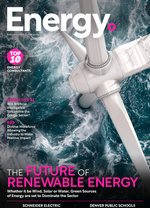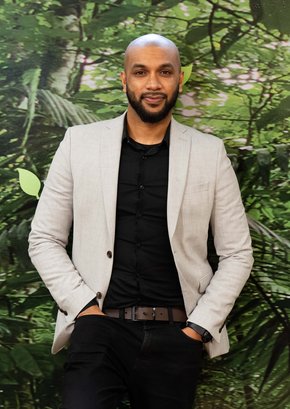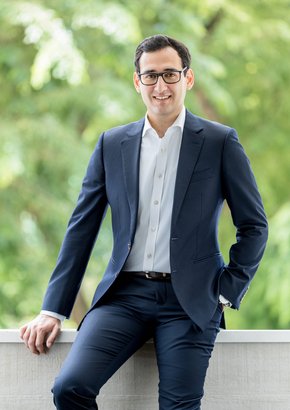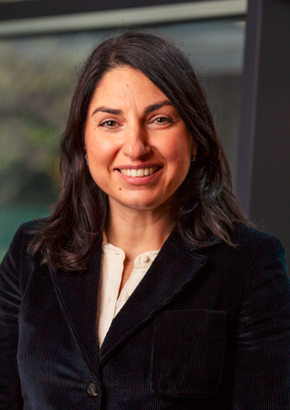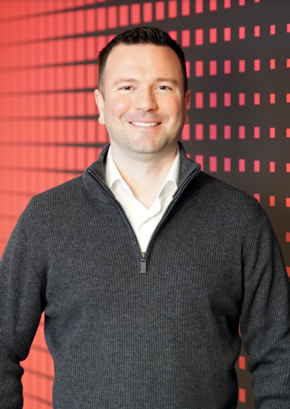
Morten Wierod
Morten Wierod is President of ABB’s Electrification business, a global technology leader in electrical distribution and management from source to socket. With a background in electrical engineering, Wierod started his ABB career in 1998. Over the last 25 years, he has worked in management positions in Norway and China before taking on several senior global management roles. Then, in April 2019, Wierod joined ABB’s Executive Committee and has been leading the Electrification business since April 2022.
Q: Building and upgrading the necessary infrastructure for electrification requires significant investment — how can this be achieved in the most efficient, long-lasting, sustainable and financially cohesive way possible?
The grid is ageing. Rather than just investing to update it, this is an opportunity to reimagine the grid and make it smarter. This involves striking a better balance between large-scale power generation and local or distributed generation. By encouraging local generation, we can reduce grid stress. Battery energy storage systems (BESS) offer a cost-effective way to integrate renewables without needing to upgrade so much infrastructure. Simultaneously, we can embrace technology that helps us manage supply and demand, especially with more weather-dependent energy sources joining the mix.
Q. Which technologies can be advantaged to promote efficient and sustainable electrification?
New technology will make the grid smarter and more efficient by going beyond storing surplus electricity. Data analytics lies at the heart of this transition. A smart network offers monitoring, control, load and outage management, automation, remote access, and maintenance.
Q. Which tools can be used to promote grid stability and reliability as electrification increases?
We can upgrade existing equipment so it lasts longer, uses less energy and prevents breakdowns. We can also harden the grid to make it more reliable and less vulnerable to extreme weather, for example by putting key infrastructure underground. In the US alone, extreme weather caused hundreds of power outages in 2023. Utilities are moving cabling underground to harden the grid and turning toward robust MV switchgear solutions that can operate in challenging conditions like three metres of flood water.
Digital tools also offer huge potential in turning data into deep insights into operations, customer behaviour and energy consumption patterns. Decision-makers can make evidence-based choices to maximise energy efficiency, minimise waste and reduce environmental impact. Adding to this, cloud and grid edge technology can protect uptime. This technology can predict potential outages before they occur, as well as detect and isolate outages, rerouting power to minimise impact.
And there are new tools. Direct Current (DC) technology is the most adapted for renewables as it reduces energy loss and raw materials. ABB’s SACE Infinitus is a world-first DC solid-state circuit breaker supporting sustainable operations. It’s 100 times faster with lower energy losses than AC, increasing overall efficiency by around 10%.
Q. How does battery storage play into the future of energy management?
Renewables are critical in the journey to net zero, but it is energy storage solutions that enable supply to match demand through local storage. This is proven technology, with customers such as Ecotricity in the UK, using BESS to store excess energy for when generation dips.
The latest BESS offers a compelling opportunity for manufacturing firms. When connected to a virtual power plant — a network of small and medium energy sources that come together to function as a single, unified plant — BESS can provide a new revenue stream for businesses through energy trading. AI and Machine Learning (ML) can reduce battery degradation, which will improve battery lifetime and payback time on the initial investment.
Q. How can data insights be used to reduce energy use?
Energy and asset management solutions monitor and analyse systems to turn data into actionable insights. Decision-makers can identify quick wins and reduce energy consumption while ensuring better energy security.
Pairing AI and ML can take digital systems to the next level. Systems can analyse data, establish a baseline and then operate unsupervised. They can identify different modes of operation and provide recommendations, for example to turn off an asset if the system detects potential faults.
Q. What is the relationship between the human workforce and the technology being used, and how can that be managed to get the most out of technology?
The future is clearly digital, so investing in a skilled workforce is vital. We need people that can leverage emerging technologies effectively with knowledge of both operational and information technology.
We are facing a skills shortage and our own research has revealed businesses are reducing investment in training their workforces in response to increased energy costs. As well as a focus on education, we can use technology to support workers and offset the skills shortage. We offer innovative new remote support services via AR, while remote maintenance enables us to reduce downtime and fix problems without an engineer visiting the site. Experts can remotely guide repairs and maintenance to support our customers with speed and agility.
******
Make sure you check out the latest edition of Energy Digital and also sign up to our global conference series - Sustainability LIVE 2024
******
Energy Digital is a BizClik brand
Featured Interviews
“It’s about turning it beyond building that market awareness; beyond that education to actually go after tangible, measurable, replicable claims”

